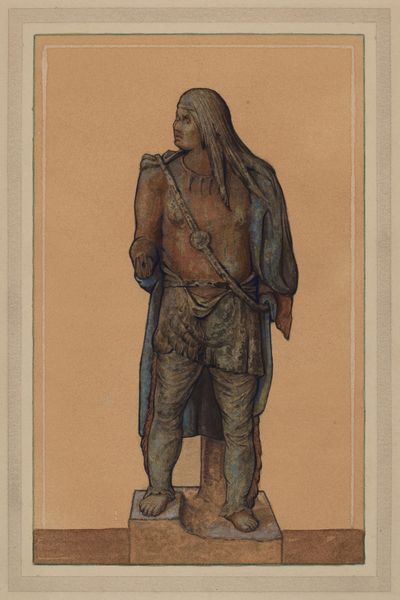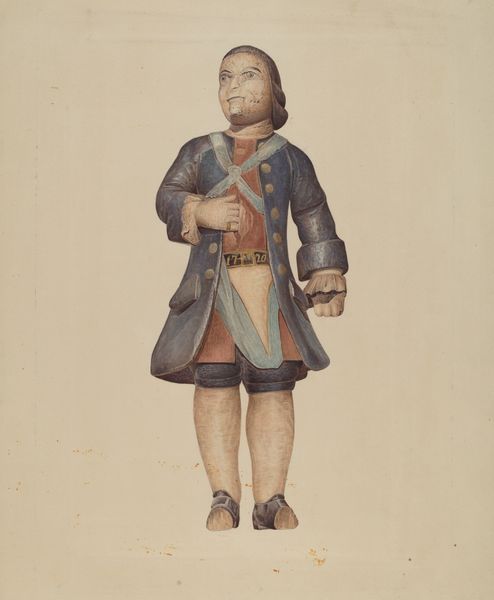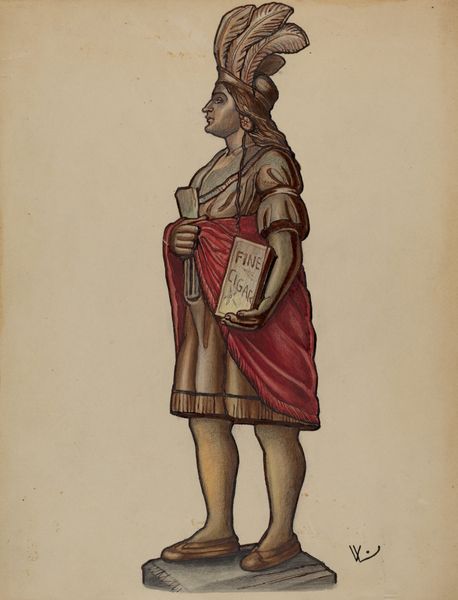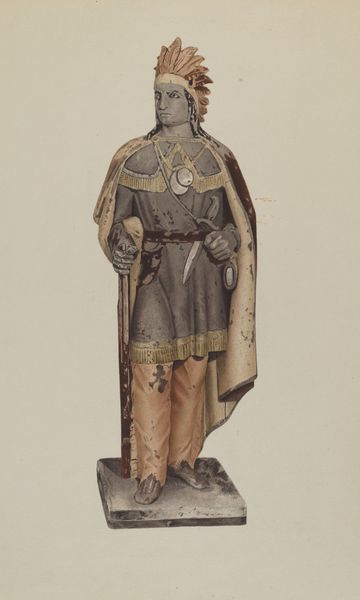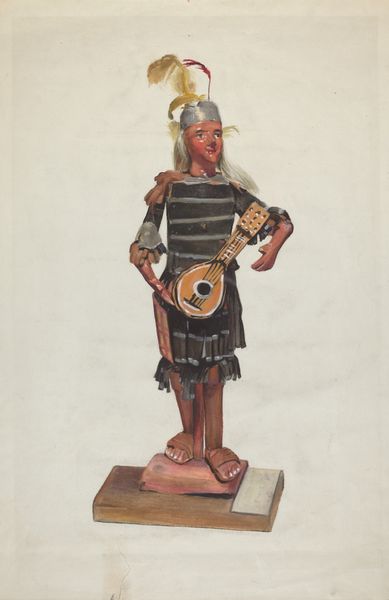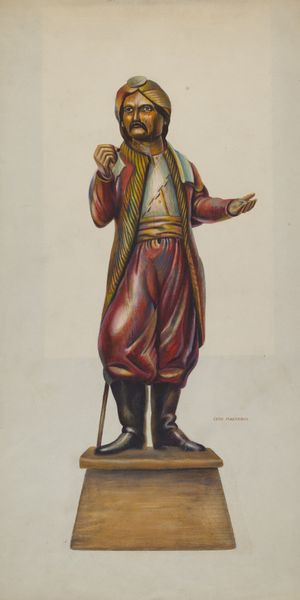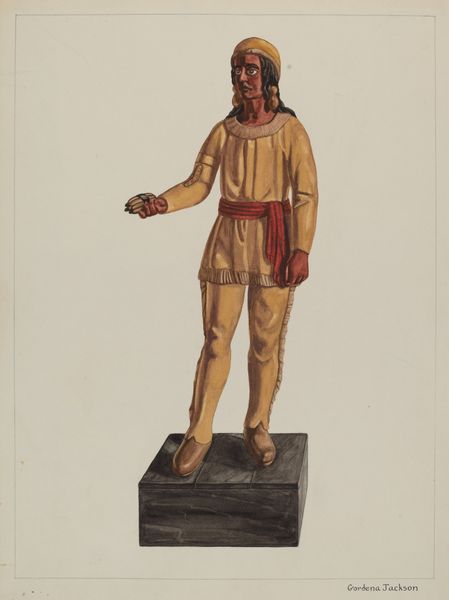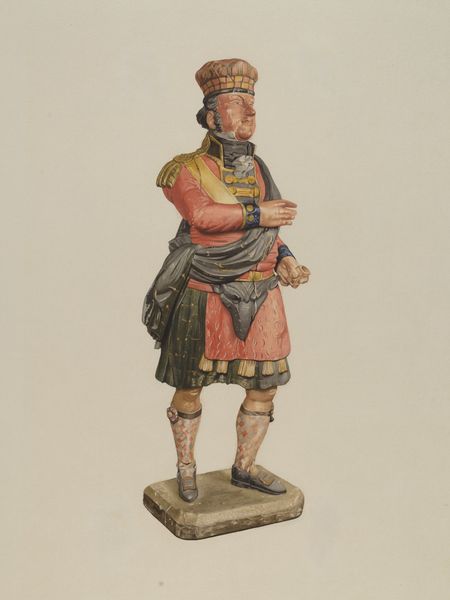
drawing, painting, watercolor
#
portrait
#
drawing
#
painting
#
charcoal drawing
#
figuration
#
oil painting
#
watercolor
#
realism
Dimensions: overall: 56.9 x 35.6 cm (22 3/8 x 14 in.)
Copyright: National Gallery of Art: CC0 1.0
Editor: This is Henry Murphy’s "Cigar Store Indian," painted around 1940, using watercolors, oils, and possibly charcoal. I find the image simultaneously dignified and...unsettling, given the context it implies. What's your interpretation? Curator: That's a very perceptive reaction. The history of these "Cigar Store Indians" is fraught with appropriation and misrepresentation. Consider how these figures, initially intended as markers of commerce, evolved into stereotypes that reinforced a dominant, colonial narrative. What does it mean to see Indigenous people reduced to emblems of a specific industry, divorced from their complex cultures and histories? Editor: So, the very existence of these figures perpetuates a harmful narrative? Curator: Precisely. It's essential to interrogate the power dynamics at play. Who gets to represent whom, and to what end? How does this representation impact Indigenous identity and lived experience? This image isn’t simply a portrait; it's a loaded symbol within a larger framework of cultural appropriation. Can we separate its artistic qualities from this historical burden? Editor: It seems impossible to ignore that baggage. It changes how one sees the colors, the detail... even the artist’s intention. Curator: Indeed. This image invites us to consider how art can both reflect and perpetuate societal biases. What responsibilities do artists have in engaging with sensitive subject matter? Editor: This has given me a lot to think about, particularly the intersection of art, representation, and social justice. Curator: Me too. Hopefully, it inspires deeper conversations about the complexities of our shared histories and the role art plays in shaping them.
Comments
No comments
Be the first to comment and join the conversation on the ultimate creative platform.

